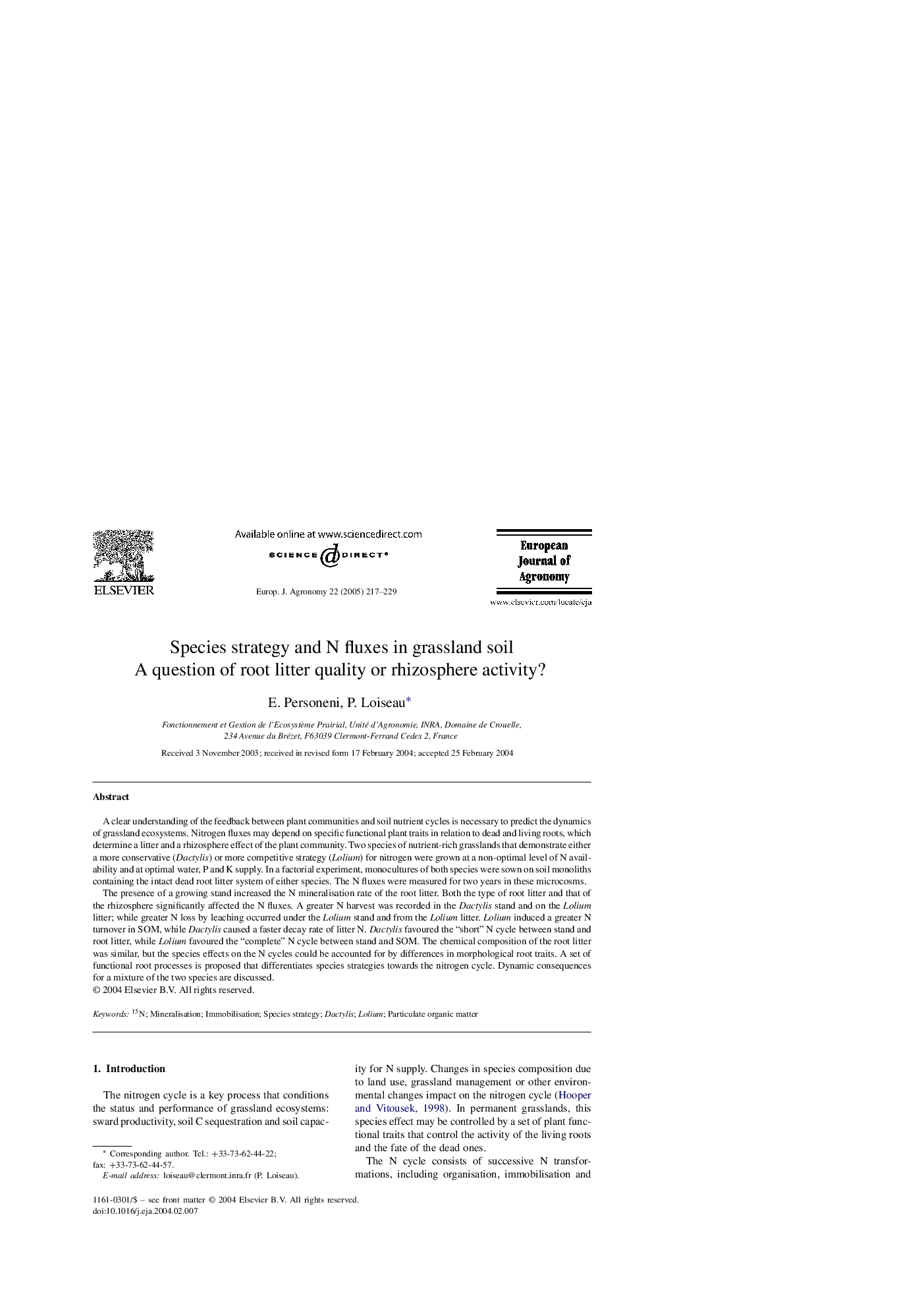| Article ID | Journal | Published Year | Pages | File Type |
|---|---|---|---|---|
| 10116660 | European Journal of Agronomy | 2005 | 13 Pages |
Abstract
The presence of a growing stand increased the N mineralisation rate of the root litter. Both the type of root litter and that of the rhizosphere significantly affected the N fluxes. A greater N harvest was recorded in the Dactylis stand and on the Lolium litter; while greater N loss by leaching occurred under the Lolium stand and from the Lolium litter. Lolium induced a greater N turnover in SOM, while Dactylis caused a faster decay rate of litter N. Dactylis favoured the “short” N cycle between stand and root litter, while Lolium favoured the “complete” N cycle between stand and SOM. The chemical composition of the root litter was similar, but the species effects on the N cycles could be accounted for by differences in morphological root traits. A set of functional root processes is proposed that differentiates species strategies towards the nitrogen cycle. Dynamic consequences for a mixture of the two species are discussed.
Related Topics
Life Sciences
Agricultural and Biological Sciences
Agronomy and Crop Science
Authors
E. Personeni, P. Loiseau,
